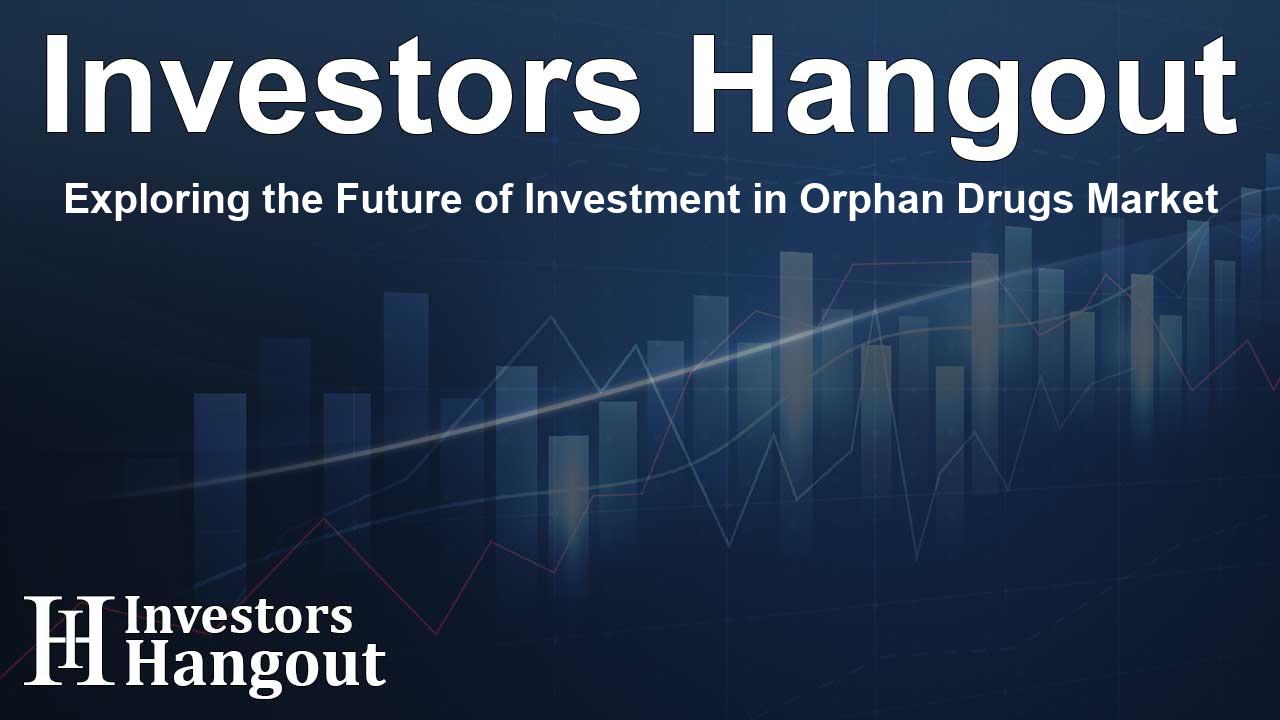Exploring the Future of Investment in Orphan Drugs Market

Promising Insights into the Orphan Drug Landscape
A recent study released by Kuick Research sheds light on the evolving dynamics of the US orphan drug market. With the increasing complexity of biopharmaceutical development, this report serves as an invaluable resource for investors, venture capitalists, and equity strategists alike. It illustrates a meticulous analysis, focusing on both the financial dimensions and the intricate regulatory environment that dictates the growth of this burgeoning market.
Significant Growth Projections
The report outlines substantial opportunities in the orphan drug sector, indicating a potential market value exceeding US$ 190 billion by the end of the decade. This figure is not just a number; it reflects the ongoing commitment and investment poured into orphan drug development. With over 850 orphan drugs currently in clinical trials, this vibrant market is becoming increasingly attractive for stakeholders seeking lucrative avenues in the healthcare landscape.
Deep Insights into Drug Development
Investors gain crucial insights from the report, detailing the market landscape for FDA-designated orphan drugs, with more than 500 currently marketed. There is a wealth of information about dosing and pricing across 400 orphan drugs, equipping investors with the necessary tools to make informed decisions. The comprehensive data, represented in over 1000 charts and tables, allows for a structured approach to understanding market trends, clinical phases, and trial priorities.
The Transformation of Rare Disease Treatment
The Orphan Drug Act, established in 1983, has fundamentally shifted the paradigm for rare disease treatments. By providing incentives such as seven years of market exclusivity and tax benefits, the Act has encouraged biopharmaceutical companies to innovate and focus on small patient populations. This initiative is not merely beneficial for patients; it has become a cornerstone of commercial strategies within the pharmaceutical industry.
Leading Examples of Success
The commercial potential of this space is epitomized by the success of treatments like Merck's Keytruda (pembrolizumab). Originally designated as an orphan drug in 2012, it has now morphed into a significant revenue generator, achieving nearly US$ 29.4 billion in global revenue—illustrating how orphan drugs can evolve into key players in the market. Similarly, Gilead’s Biktarvy has transitioned from a niche HIV treatment to a major contributor to the company's annual sales.
Collaborative Innovations Enhance Market Dynamics
Collaboration within the orphan drug sector is vital for accelerating development and mitigating risks often associated with research and development. The partnership between Cadrenal Therapeutics and Abbott, focusing on the orphan drug tecarfarin for advanced heart failure, exemplifies strategic alliances that drive innovation. Such collaborations not only ease regulatory hurdles but also serve as a model for other biotech firms striving to navigate the complexities of drug development.
Investment Opportunities Abound
As the orphan drug industry continues to mature, it is drawing interest from a diverse pool of investors exploring opportunities that align social good with financial performance. The influx of capital from various sources signifies a strong belief in the long-term viability of this market. Innovations in genomics and personalized medicine are catalyzing a broader reach for orphan drugs, expanding the patient base and enhancing demand.
The Road Ahead for Orphan Drugs
Looking forward, the prospects for the US orphan drug market appear robust, bolstered by rising diagnosis rates and expedited approval processes from regulatory bodies like the FDA. Investors have a unique opportunity to engage with a sector poised for substantial growth, where financial investments align with meaningful advancements in global healthcare. The intersection of innovation and investment is likely to render the orphan drug market one of the most compelling narratives in the evolving landscape of healthcare development.
Frequently Asked Questions
What is the US orphan drug market's projected growth rate?
The market is projected to exceed US$ 190 billion by 2030, reflecting robust investment and innovation opportunities.
How many orphan drugs are currently in clinical trials?
There are over 850 orphan drugs undergoing clinical trials, showcasing significant research activity in this space.
What role does the Orphan Drug Act play in the industry?
The Orphan Drug Act encourages the development of drugs for rare diseases by providing market exclusivity and tax incentives.
Can you provide examples of successful orphan drugs?
Keytruda by Merck and Biktarvy by Gilead are notable examples, demonstrating the commercial viability of orphan drugs.
How do collaborations impact the orphan drug sector?
Collaborations enhance innovation and efficiency in drug development, reduce risks, and facilitate faster market access for new therapies.
About The Author
Contact Thomas Cooper privately here. Or send an email with ATTN: Thomas Cooper as the subject to contact@investorshangout.com.
About Investors Hangout
Investors Hangout is a leading online stock forum for financial discussion and learning, offering a wide range of free tools and resources. It draws in traders of all levels, who exchange market knowledge, investigate trading tactics, and keep an eye on industry developments in real time. Featuring financial articles, stock message boards, quotes, charts, company profiles, and live news updates. Through cooperative learning and a wealth of informational resources, it helps users from novices creating their first portfolios to experts honing their techniques. Join Investors Hangout today: https://investorshangout.com/
The content of this article is based on factual, publicly available information and does not represent legal, financial, or investment advice. Investors Hangout does not offer financial advice, and the author is not a licensed financial advisor. Consult a qualified advisor before making any financial or investment decisions based on this article. This article should not be considered advice to purchase, sell, or hold any securities or other investments. If any of the material provided here is inaccurate, please contact us for corrections.
